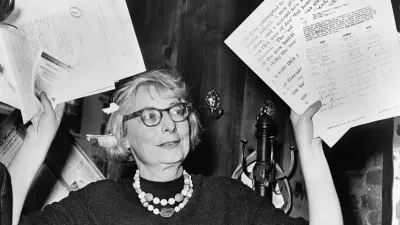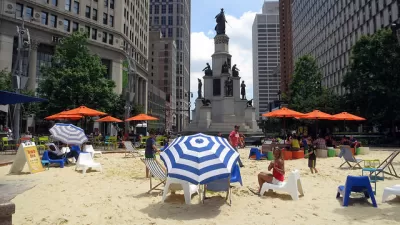In an illustrated essay, Chuck Wolfe contrasts the ideal form of the New England town with an abandoned French village, calling out the human infrastructure essential to successful urban places.

Writing in myurbanist, Wolfe takes on the strength and fragility of urban places, and the inherent ironies of surviving town forms.
Under the guise of "remember your past", Wolfe notes the basic elements of the classic New England town as a convenient model for today’s quest for compact, walkable urban areas. Then, using the gloss of a personal encounter with a small, French urban settlement--once called Brovès--he asks what happens when the human underpinnings for a town are taken away.
Brovès is one of several villages and hamlets in the Var region of Provence abandoned in the 1970′s in favor of a military camp, and is no longer recognized as a municipality.
Wolfe describes how its physical form lives on with decisive irony:
The former village of Brovès is a stage at first deceptively alive with structure–like the New England town, a church and surrounding buildings dot the landscape. But it is a remarkably silent landscape, a silence with military “interdit” (in English, “no entry”) signs that begged for research...
He continues:
There is a larger French sociopolitical picture, of course that speaks to military defense decisions of the Cold War era. But at core, my sudden encounter with Brovès contrasts markedly with urbanism that can be reclaimed in the New England landscape addressed above.
In conclusion, Wolfe explains two critical lessons for looking forward.
First, an interdisciplinary view of today’s urbanism critical: multiple, intertwining forces define how places evolve. Second, Shakespeare's Coriolinus is commonly cited for a reason. The people truly are the city.
FULL STORY: contrasting two models of how places survive

Maui's Vacation Rental Debate Turns Ugly
Verbal attacks, misinformation campaigns and fistfights plague a high-stakes debate to convert thousands of vacation rentals into long-term housing.

Planetizen Federal Action Tracker
A weekly monitor of how Trump’s orders and actions are impacting planners and planning in America.

In Urban Planning, AI Prompting Could be the New Design Thinking
Creativity has long been key to great urban design. What if we see AI as our new creative partner?

King County Supportive Housing Program Offers Hope for Unhoused Residents
The county is taking a ‘Housing First’ approach that prioritizes getting people into housing, then offering wraparound supportive services.

Researchers Use AI to Get Clearer Picture of US Housing
Analysts are using artificial intelligence to supercharge their research by allowing them to comb through data faster. Though these AI tools can be error prone, they save time and housing researchers are optimistic about the future.

Making Shared Micromobility More Inclusive
Cities and shared mobility system operators can do more to include people with disabilities in planning and operations, per a new report.
Urban Design for Planners 1: Software Tools
This six-course series explores essential urban design concepts using open source software and equips planners with the tools they need to participate fully in the urban design process.
Planning for Universal Design
Learn the tools for implementing Universal Design in planning regulations.
planning NEXT
Appalachian Highlands Housing Partners
Mpact (founded as Rail~Volution)
City of Camden Redevelopment Agency
City of Astoria
City of Portland
City of Laramie





























